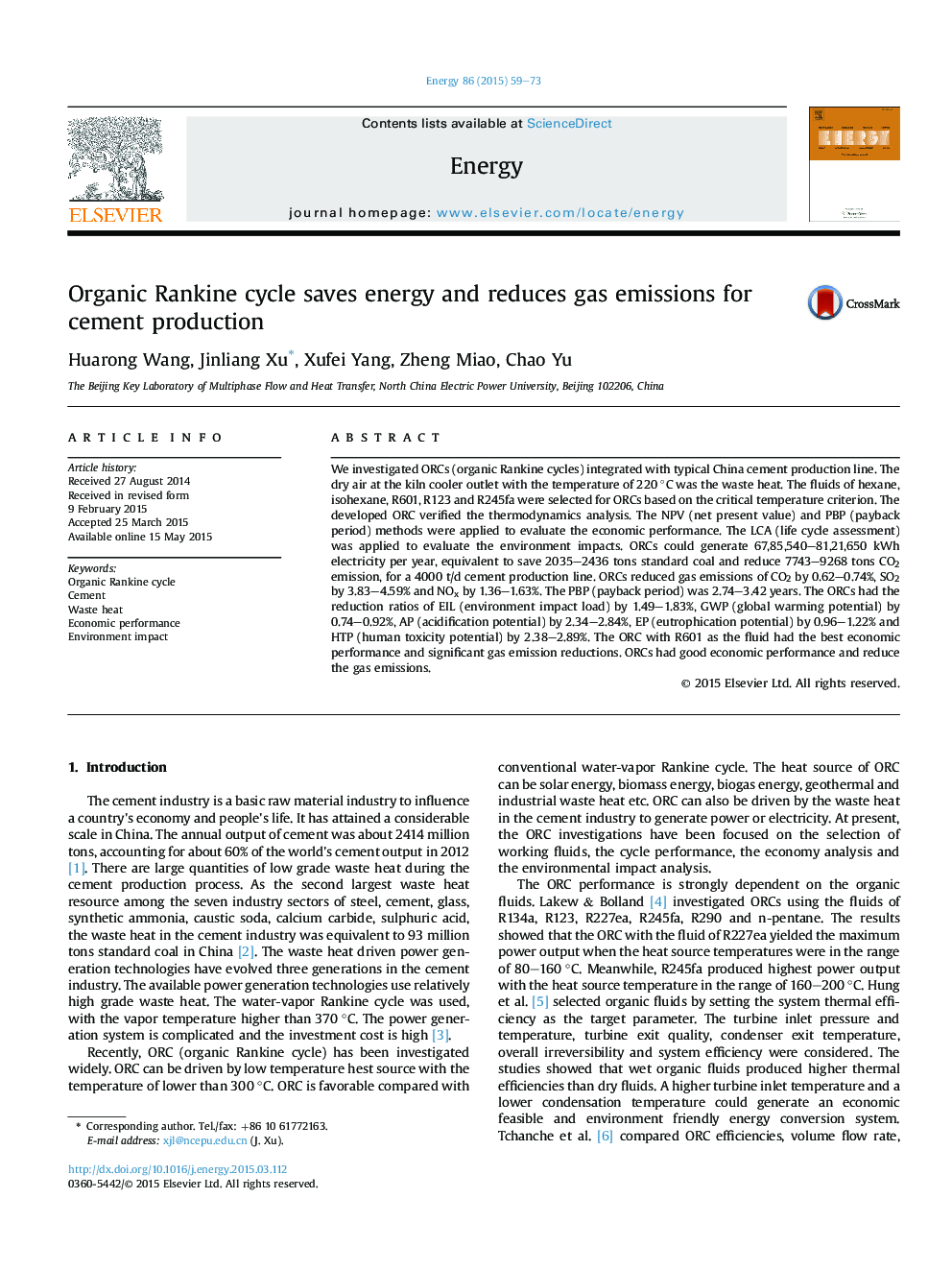| Article ID | Journal | Published Year | Pages | File Type |
|---|---|---|---|---|
| 1732217 | Energy | 2015 | 15 Pages |
•Organic Rankine Cycles were integrated with the cement production line.•Five organic fluids were used as the working fluids for ORCs.•Thermal, economic and gas emission performances were analyzed.•R601 was the best fluid for ORC with the heat source temperature of 220 °C.•ORCs had good economic and gas emission reduction performances.
We investigated ORCs (organic Rankine cycles) integrated with typical China cement production line. The dry air at the kiln cooler outlet with the temperature of 220 °C was the waste heat. The fluids of hexane, isohexane, R601, R123 and R245fa were selected for ORCs based on the critical temperature criterion. The developed ORC verified the thermodynamics analysis. The NPV (net present value) and PBP (payback period) methods were applied to evaluate the economic performance. The LCA (life cycle assessment) was applied to evaluate the environment impacts. ORCs could generate 67,85,540–81,21,650 kWh electricity per year, equivalent to save 2035–2436 tons standard coal and reduce 7743–9268 tons CO2 emission, for a 4000 t/d cement production line. ORCs reduced gas emissions of CO2 by 0.62–0.74%, SO2 by 3.83–4.59% and NOx by 1.36–1.63%. The PBP (payback period) was 2.74–3.42 years. The ORCs had the reduction ratios of EIL (environment impact load) by 1.49–1.83%, GWP (global warming potential) by 0.74–0.92%, AP (acidification potential) by 2.34–2.84%, EP (eutrophication potential) by 0.96–1.22% and HTP (human toxicity potential) by 2.38–2.89%. The ORC with R601 as the fluid had the best economic performance and significant gas emission reductions. ORCs had good economic performance and reduce the gas emissions.
